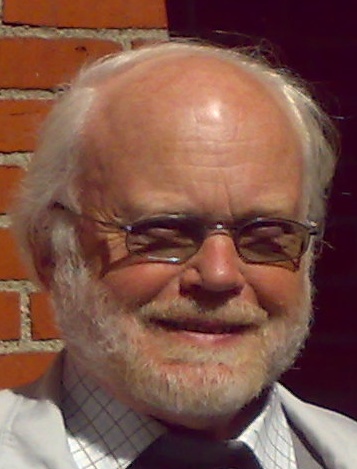Emer. Prof. Mogens True Wegener
Assumptions
Found: 22| 2015-02-12 17:29:22 | All experience proves that Time Flows, the present separating the past from the future.
| |
| 2015-02-12 17:29:46 | The Now is the moment of becoming when reality emerges annihilating empty possibilities.
| |
| 2015-02-12 17:30:02 | The Universe (U) must therefore be subject to the Absolute Simultaneity of a Universal Time.
| |
| 2015-02-12 17:33:11 | Atoms of the same type, if exposed to similar conditions, partake in the same Cosmic Rhythm.
| |
| 2015-02-12 17:33:28 | Only a universe (u) with an infinite substratum of fundamental particles can sustain such rhythm.
| |
| 2015-02-12 17:33:48 | In order to possess invariant laws such universe must be expanding relative to the sizes of atoms.
| |
| 2015-02-12 17:34:03 | The only relevant universes are those with a structure determined by an expanding substratum (S).
| |
| 2015-02-12 17:34:17 | The crucial property of these universes is not homogeneity, but the symmetry of Cosmic Isotropy.
| |
| 2015-02-12 17:35:22 | The substratum of fundamental particles is covered by local layers, or strata, of accidental particles.
| |
| 2015-02-12 17:35:35 | The substratum thereby offers a spatial background on which individual traits can be distinguished.
| |
| 2015-02-12 17:36:37 | Fundamental particles (FP) are at rest in S, relative to the CMBR. Accidental particles (AP) are not.
| |
| 2015-02-12 17:36:48 | The clocks of fundamental particles count universal time (T), while those of accidental ones do not.
| |
| 2015-02-12 17:36:51 | A fictitious spatial standard frame can be construed around any object, whether at rest or in motion.
| |
| 2015-02-12 17:36:55 | However, it can never be supplied with identical clocks except for infinitesimal elements of the grid.
| |
| 2015-02-12 17:36:05 | At any time T only one fundamental particle can be at rest in a frame, constituting its Natural Origo.
| |
| 2015-02-12 17:36:24 | An object O refers at any T to two FP: FP1 with which it coincides; FP2 relative to which it is at rest.
| |
| 2015-02-12 17:36:59 | The clock of object O is slow relative to that of FP1 due to motion, to that of FP2 due to gravitation.
| |
| 2015-02-12 17:37:03 | The retardation of O-time t is: {1 - V^2 /c^2}^-2 relative to FP1, {1 + 2? /c^2}^-2 relative to FP2.
| |
| 2015-02-12 17:35:49 | So the "motional energy" of O relative to FP1 equals the "gravitational" energy of O relative to FP2.
| |
| 2015-02-12 17:37:07 | Thus it is not the master clock of an FP passing over the standard frame of another FP that is slow.
| |
| 2015-02-12 17:32:58 | It is the slave clocks in that frame which are slow relative to the master clock of the FP showing T.
| |
| 2015-02-12 17:30:40 | There is no attraction between fundamental particles, thus no valid Einstein-Friedmann equation.
|

